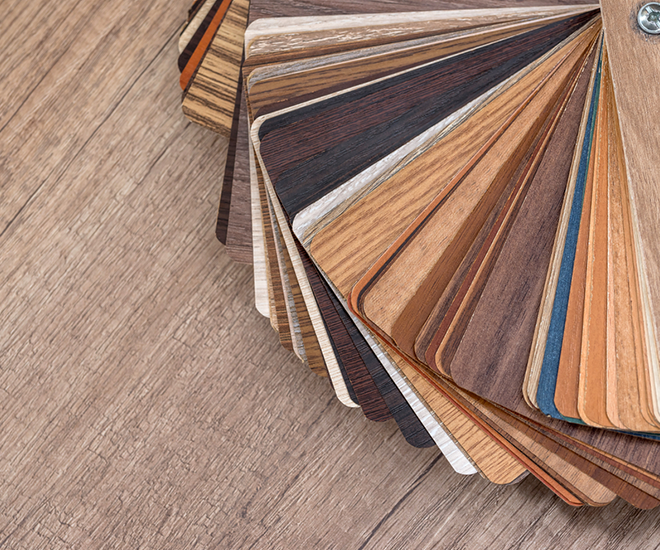When you think of plywood veneer, picture a thin slice of wood that’s been delicately cut and then glued onto a plywood core. These slices are usually less than 3mm (or about 1/8 of an inch) thick and can be as thin as 0.6mm (or 1/40 of an inch). It’s fascinating how such thin slices can add beauty and stability to various products.
Let’s talk about the different types of veneers to give you a better idea of what they are and how they’re used:
- Raw Veneers: These don’t have any backing, so you can use either side.
- Paper-Backed Veneers: As the name suggests, these have a paper backing, making them available in larger sheets.
- Phenolic Backed Veneers: These are artificial, which might sound off-putting, but they’re environmentally friendly and increasingly popular.
- Laid-Up Veneers: These are made by combining raw veneers to create larger pieces.
- Reconstituted Veneers: These are manufactured from fast-growing tropical species.
- Wood on plywood veneers: Also called 2-Ply, these are decorative veneers with a utility-grade wood backer applied.
The production process for veneers is pretty interesting. It starts with large logs, which are sent to a veneer-producing company. The logs are then cut by a saw kerf, a method that helps maximize what can be obtained from the log. This way, not only is value added to each log, but it also ensures that resources aren’t wasted. It’s a smart way to get the most out of what nature provides.
What Makes Veneers So Useful?
So, why should you care about veneers? Let’s discuss some of their advantages.
One of the biggest benefits is that they add stability to a product. Regular wood can warp or split over time, but veneers, made up of thin layers with glue, are much less prone to these issues. The glue adds extra strength, making the final product stronger overall. Some projects simply wouldn’t be possible without veneers!
There’s also an environmental angle. If you care about sustainability and recyclability, veneers are a great choice. Building with wood products has a lower impact on energy and pollution, which is fantastic for the planet. Plus, plywood veneer helps extend the use of a piece of plywood, allowing it to cover a much greater area than it would without the veneer. This way, you get more from each piece of wood, reducing waste. And did I mention it’s a non-toxic product? That’s a win-win for everyone.
Where Can You Get Veneer?
If you’re intrigued by plywood veneers and want to explore them further, Plyco has a wide range of products to choose from. They offer Veneered MDF, Strataply, and Veneered Particleboard through their online store. If you’re in Australia, they’re a great source for timber veneers, veneered plywood, and anything else veneer-related. They have showrooms in Melbourne, Brisbane, and Sydney, so you can see these beautiful veneers in person.
Whether you’re a woodworker, a DIY enthusiast, or just curious about the benefits of plywood veneer, there’s something here for everyone. So why not check it out and see if veneers are right for your next project? If you’re in the neighborhood, you might even visit Plyco’s Fairfield showroom to see the stunning results veneers can create.


